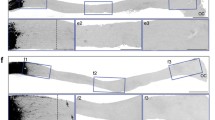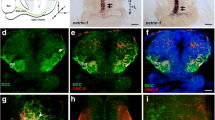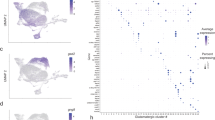Abstract.
Retinal ganglion cell (RGC) axons from the temporal retina project to the anterior superior colliculus (SC), whereas nasal retinal axons project to the posterior SC. The stripe assay has shown that temporal retinal axons avoid growing on membrane stripes from the posterior SC but nasal retinal axons show no growth preference. Several putative guidance molecules have been identified in target tissues for these axons during development in vertebrates. Regenerating axons from adult rat retinae also possess the capacity to recognize appropriate target cells and to form functional connections in vivo and in vitro. However, the expression of information for axonal guidance and target recognition in mammals and birds seems to be limited to the period when central nervous system projections develop during embryogenesis. Nevertheless, the deafferented adult rat SC re-establishes target information recognizable by embryonic rat retinae, although the re-expression of guidance factors after deafferentation does not seem to be a mere recapitulation of their normal developmental expression pattern. The roles of astrocytes and microglia in axon guidance are also discussed.
Similar content being viewed by others
Author information
Authors and Affiliations
Additional information
Received: 30 April 1997 / Accepted: 23 June 1997
Rights and permissions
About this article
Cite this article
Wizenmann, A., Bähr, M. Growth characteristics of ganglion cell axons in the developing and regenerating retino-tectal projection of the rat. Cell Tissue Res 290, 395–403 (1997). https://doi.org/10.1007/s004410050946
Issue Date:
DOI: https://doi.org/10.1007/s004410050946




